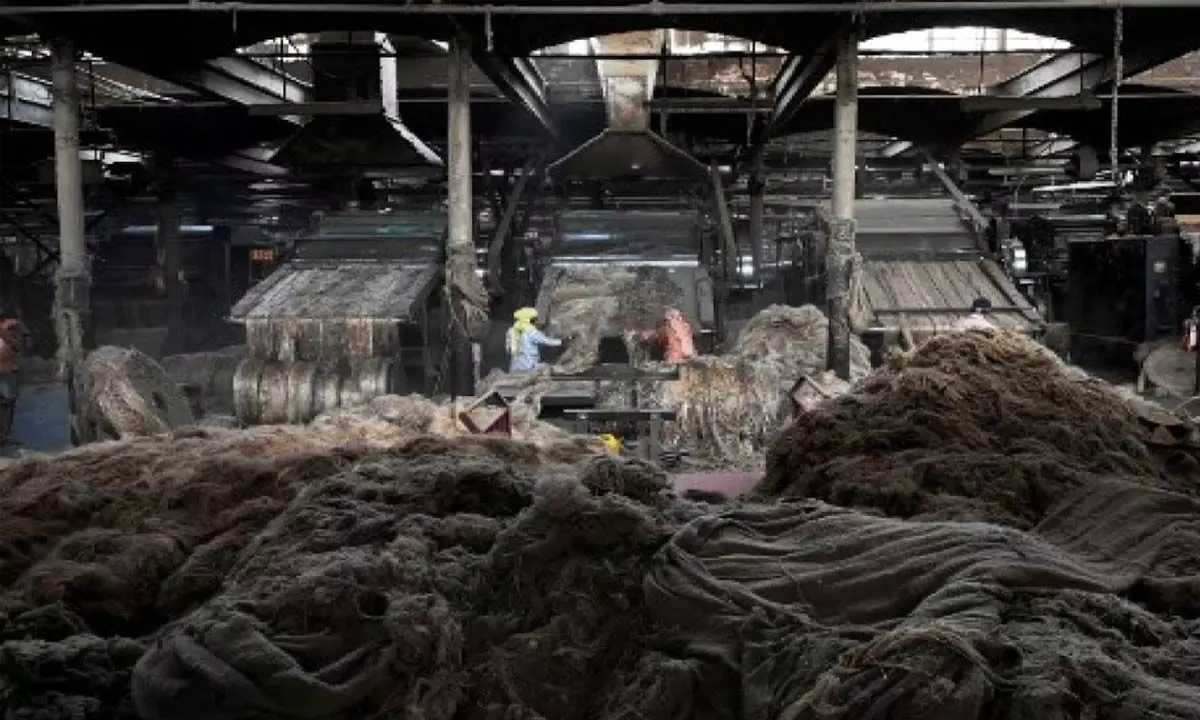Is the Indian jute industry on a revival path?
Is the Indian jute industry on a revival path? The spurt in demand for jute bags from key export markets like the US, the UK, the rest of Europe and the UAE has certainly rekindled such a hope.
image for illustrative purpose

Is the Indian jute industry on a revival path? The spurt in demand for jute bags from key export markets like the US, the UK, the rest of Europe and the UAE has certainly rekindled such a hope. This is notwithstanding the fact that as far the domestic market is concerned, the industry continues to depend on government orders for food grain packaging. Much of the hope for a revival of India's jute industry rests on bans on single-use plastics that dozens of countries, including India, have enacted in recent years.
Mind you that the global jute bag market, which stood at $2.3 billion in 2021, is expected to grow to $3.38 billion in 2026. Shopping bags accounted for a quarter of the roughly $400 million in jute products that India exported in 2021, and over the past five years, the country's jute bag exports had more than tripled. The US is by far the largest export market for all Indian jute products, growing by 25.5 per cent last year to almost $100 million. Sector analysts think that the bags are pulling this industry out of sleep. These bags are affordable, robust, and environment friendly. One also has to keep in mind that besides packaging, jute is used in construction, interior decoration, offices and it is also used for home appliances.
Little wonder therefore that the exports of jute and jute products from India have headed northward at a very fast pace in the recent years. Even the pandemic could not stop this upward journey. In fact, in FY 22, shipments of jute and jute products went up by 38 per cent YoY to reach Rs3786 crore. Jute products being exported out of India include sacks, carpet backing fabrics, soil savers, and jute canvas.
The recent spurt in export demand is also reflected in capacity ramping up exercise being undertaken by the leading export oriented jute manufacturing units. They have been on a huge growth trajectory though they are facing tough competition from units in Bangladesh. Significant expansions in capacities by large units like Birla Jute Mills and Golster are cases in point. Birla Jute Mills for instance, is set to double exports to 5 million tonne in FY23 from an average of 2.5 million tonne per annum in recent years.
While such significant growth in export demands for jute and jute products is certainly a welcome development, industry insiders feel that demand for such products must grow equally strongly in the domestic markets as well. Nothing much or significant is happening on that front. The jute industry is looking for a tripartite arrangement between the top retailers, jute bag manufacturers and the government to promote wider usage of jute bags in India. Domestic market needs to be more responsive to jute products as well. Pricing certainly is a deterrent in promoting larger use of jute bags within the country. And ironically, the effort to develop cheaper plastic-free packaging and a new material or fabric, blending jute and paper, did not progress much, thanks to lack of financial strength and bandwidth of the packaging industry, mostly in the MSME segment. A true and overall revival of the golden fibre will depend on these factors.

